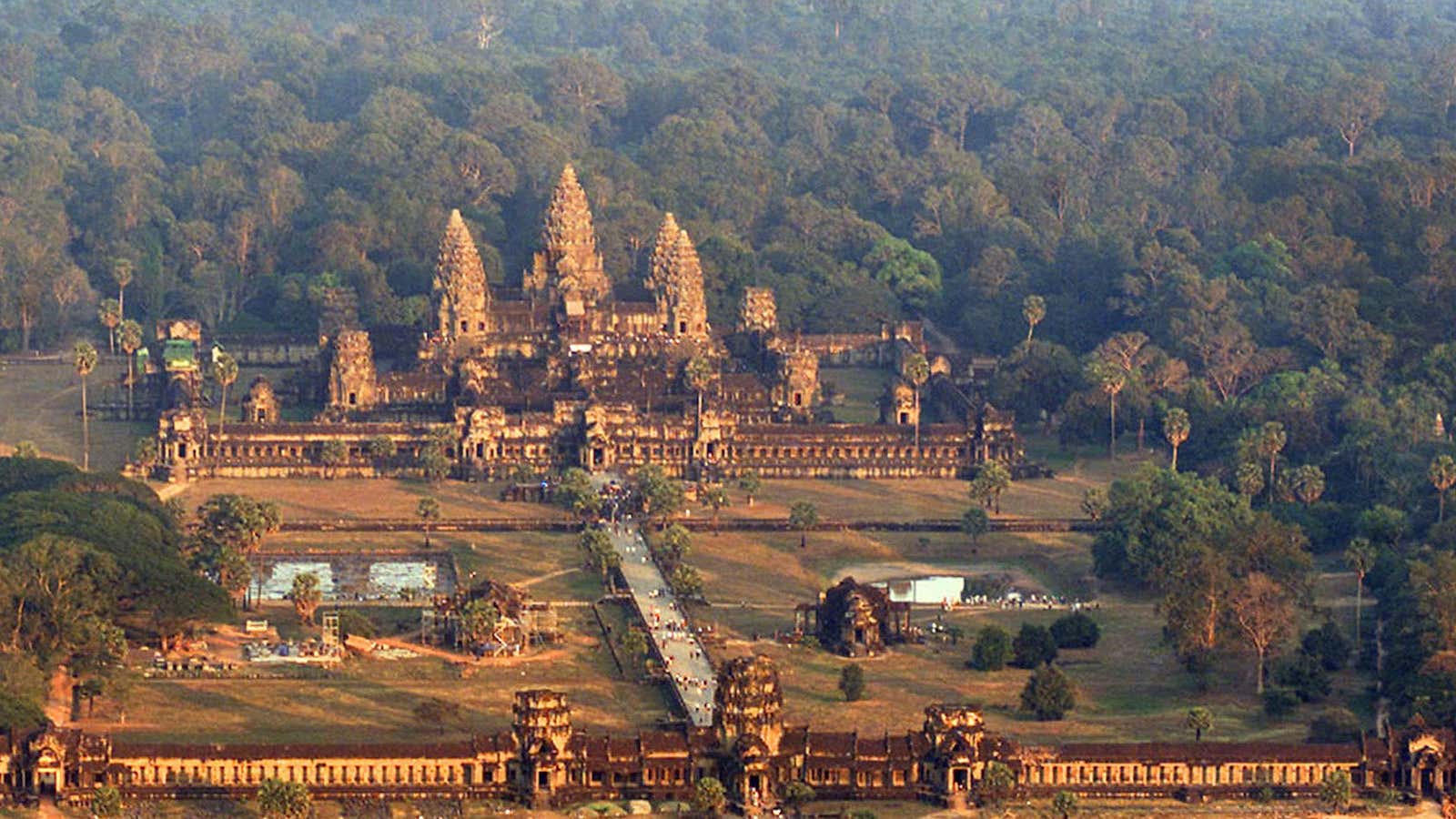In 2012, archaeologists discovered what many had lusted after for decades: pyramids and monuments hidden in the Mosquitia rainforest in Honduras that constituted the remains of an entire lost civilization that thrived more than 1,000 years ago. A few years later in 2015, another huge network of ancient city ruins of the Khmer Empire, never known to have existed, were found deep beneath forests in Cambodia.
The vegetation covering each of these lost cities had become so densely overgrown that human exploration was nearly impossible—if you even knew where to search. To an unaided eye, they were unrecognizable as anything other than vast forests. So how did archaeologists find them?
The discoveries were only possible thanks to LiDAR (Light Detection and Ranging), a technology that uses light detection and ranging sensors to send out laser pulses to create a detailed 3D map of the world. LiDAR has become more well-known in recent years as the technology that enables autonomous vehicles and allows self-driving cars to sense and navigate the world. But this technology extends far beyond the transportation industry: It can help machines “see” and impacts the way humans view the physical world.
For example, mounted on a helicopter and flown over valleys, LiDAR was able help find these ancient ruins by mapping the ground below via shooting laser pulses down through the dense forest. Using this data, researchers revealed unnatural archaeological features that hinted at previous human activity.
Cartography and mapping can be traced back thousands of years to early pictorial drawings of nature, which portrayed ancient city maps of Babylon and Egyptian property boundaries. Over the past millennia, a growing understanding of Earth, geography, and mathematics has resulted in increasingly more intricate maps that, from each passing century, give a snapshot into the way humans saw the world. From the first map using geometry in 15th-century Greece to the launch of Google Earth in 2005, the mapping space has evolved tremendously. And LiDAR may be the next frontier.
The use of LiDAR for physical mapping is not an entirely new concept—one of its early applications was to help NASA astronauts study the surface of the moon during the Apollo mission in 1971—but it has become more advanced over time. It produces a completely new way to image our surroundings: in 3D, with incredible detail, and far more quickly than traditional methods. What takes weeks (and sometimes years) to map through surveying can be done in a matter of days, or even hours, using LiDAR.
A mapping system using LiDAR technology not only has the potential to unearth new discoveries—it can also provide far-reaching benefits to a variety of industries, including city planning, architecture, environmental work, disaster relief, and drone delivery. In a world prone to change, by both the environment and humans, LiDAR gives us a quick and accurate way to measure developments around us.
As humanity grapples with how to solve climate change, LiDAR mapping can help us make observations about the speed in which forests are declining, oceans are rising, and ice caps are shrinking. In fact, the Monterey Bay Aquarium recently announced that it is developing a system that will use LiDAR to observe ocean changes and processes that were once incredibly difficult to map and measure.
In the wake of natural disasters such as tornadoes, hurricanes, and earthquakes, LiDAR can be used to map damage and pinpoint areas of vulnerability. Downed trees and power lines can be more easily located, for example, without placing humans in danger. After Hurricane Sandy, a work train attached with LiDAR was sent into flooded New York subway tunnels to find sections of structural damage.
In addition to reactionary efforts, the use of LiDAR for planning purposes is becoming increasingly common. A couple of years ago, the city of San Francisco used LiDAR to map Market Street in preparation for a redesign. Having a detailed map of the street and the buildings, sidewalks, and streetcar lines surrounding it gave city planners a comprehensive starting point. Mapping the layout of a city can also help plan evacuation routes or areas that may be prone to future damage, such as flood zones.
Similar to early explorers using maps to communicate sights and worlds unknown, we are now recreating this same phenomenon in a more advanced manner. From discovering lost worlds to planning cities of the future, we can’t see the future—but LiDAR might.
